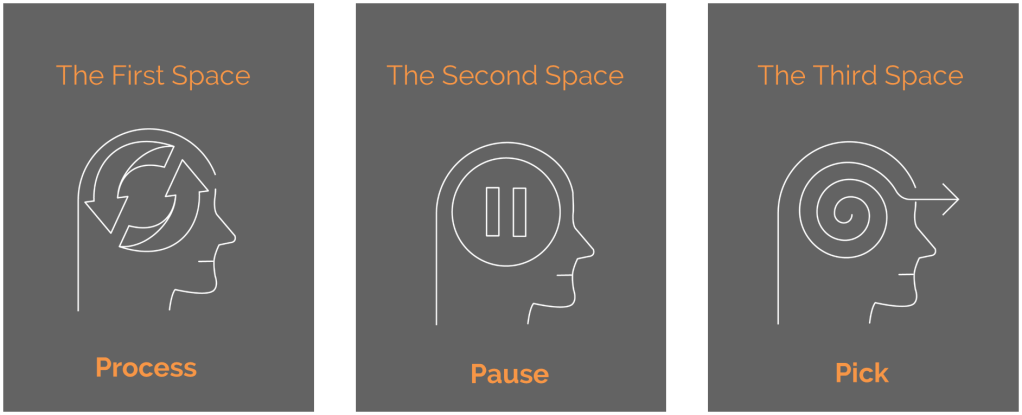*UPDATE*
This post by Dan Carter is very similar to the 3-space model described below:
https://www.linkedin.com/feed/update/urn:li:activity:7184014249415917570
The 3-Space model is a really flexible way of navigating transitions.
It is as relevant to elite athletes as it is to those in business.
Here’s how it works:
Imgine you have 30 or so seconds between work calls or meetings.
It is easy in that context to take the stress or emotion from one call into another. In turn this can impact behaviour in the next call, with the cycle potentially repeating.
This is a tricky challenge – 30 seconds is not long, after all!
And yet there are techniques that can help with fast emotion regulation and help us take more more effective action.
One of these is the 3-Space model.
Instead of doing nothing in the 30 seconds, divide the time into 3, roughly equal parts:

The First Space – Processing your emotions
In the first 10 seconds, try to tune into your body – what are you feeling? What thoughts are you experiencing? What emotions are you feeling? Where do these show up in your body?
The Second Space – Pausing to get present
In the next 10 seconds, see if you can intentionally pause to bring yourself into the present moment. You can do this by taking a couple of deep breaths, looking at the sky or touching a cold surface.
The Third Space – Picking your response
In the final 10 seconds your job is to intentionally pick the most effective behaviour in the next passage of time. For example:
- Business: What kind of impression do I want to make in the next meeting? What are my objectives?
- Home life: What kind of Dad do I want to be when I turn the key and open the door?
- Sports: What can I do to put pressure back on my opponent?
I wouldn’t say the effect of using the 3-space model is dramatic, but I do find its value tends to compound over time.
I regularly use it with my children, especially when tired, and it helps ‘lift and shift’ me away from reactive mode and towards being more connected to my values pretty reliably.
